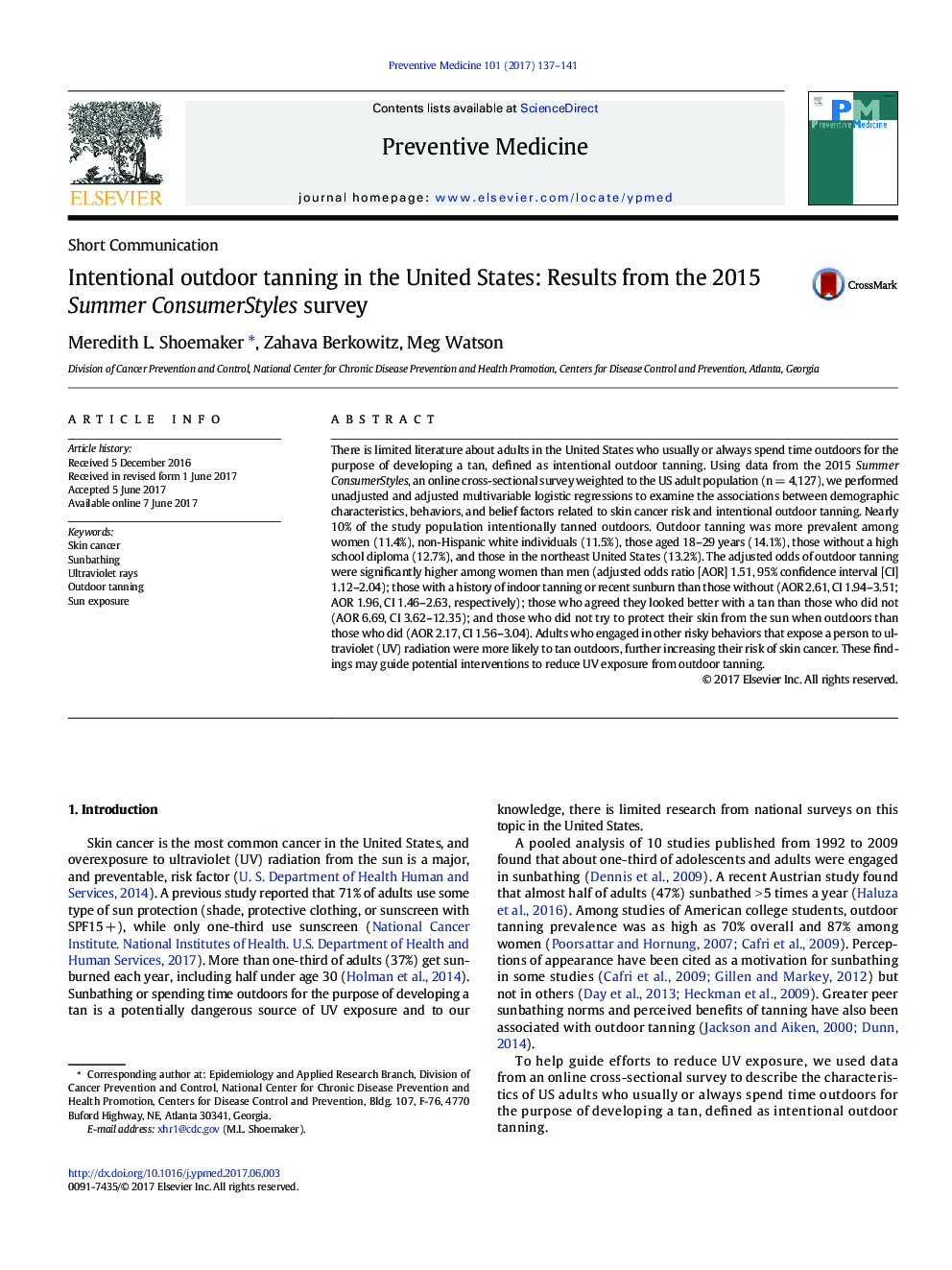| Article ID | Journal | Published Year | Pages | File Type |
|---|---|---|---|---|
| 5635539 | Preventive Medicine | 2017 | 5 Pages |
â¢Nearly 10% of US adults engaged in intentional outdoor tanning.â¢Women were more likely to intentionally tan outdoors than men.â¢Belief in looking better with a tan was strongly associated with outdoor tanning.â¢Adults who indoor tanned or had a recent sunburn were more likely to tan outdoors.â¢Not trying to protect one's skin from the sun was associated with outdoor tanning.
There is limited literature about adults in the United States who usually or always spend time outdoors for the purpose of developing a tan, defined as intentional outdoor tanning. Using data from the 2015 Summer ConsumerStyles, an online cross-sectional survey weighted to the US adult population (n = 4,127), we performed unadjusted and adjusted multivariable logistic regressions to examine the associations between demographic characteristics, behaviors, and belief factors related to skin cancer risk and intentional outdoor tanning. Nearly 10% of the study population intentionally tanned outdoors. Outdoor tanning was more prevalent among women (11.4%), non-Hispanic white individuals (11.5%), those aged 18-29 years (14.1%), those without a high school diploma (12.7%), and those in the northeast United States (13.2%). The adjusted odds of outdoor tanning were significantly higher among women than men (adjusted odds ratio [AOR] 1.51, 95% confidence interval [CI] 1.12-2.04); those with a history of indoor tanning or recent sunburn than those without (AOR 2.61, CI 1.94-3.51; AOR 1.96, CI 1.46-2.63, respectively); those who agreed they looked better with a tan than those who did not (AOR 6.69, CI 3.62-12.35); and those who did not try to protect their skin from the sun when outdoors than those who did (AOR 2.17, CI 1.56-3.04). Adults who engaged in other risky behaviors that expose a person to ultraviolet (UV) radiation were more likely to tan outdoors, further increasing their risk of skin cancer. These findings may guide potential interventions to reduce UV exposure from outdoor tanning.
